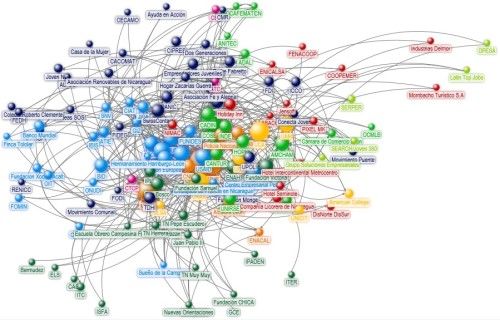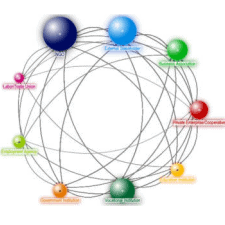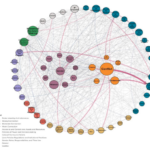Strengthening Local Systems Through Network Analysis
LINC’s network analysis tool has been specially calibrated to the international development sector and can be applied to a variety of program areas and contexts. The tool is an integrated network mapping, partner identification, program design, monitoring and evaluation tool, providing unique insight into our clients’ context of work and the dynamics of the relationships they forge within it. It can be a powerful tool for government, donors, and organizations designing NGO assistance strategies, classifying the country context, mapping-out networks, recommending and measuring assistance strategies that address systems constraints to local systems strengthening.
Complex Systems
Network analysis, as commonly applied to single organizations, provides a powerful x-ray of interactions among staff members or sub-groups within that organization/company. Application to international development adds an additional layer of complexity, challenging both program implementers and evaluators to view their activities through a systems lens. The tool captures both the static (structural) and dynamic (behavioral) parameters of complex local actor ecosystems, quantitatively measuring and tracking local systems impact against activities undertaken by donor-funded programs. As a result, network analysis feedback loops enable program implementers to appropriately calibrate their interventions as they progress and learn from them.
Emphasizing Accessibility
LINC’s network analysis is applied quickly and cost-effectively utilizing census-based instruments, employing customized network mapping software, and analyzing results. The analysis is applied by a questionnaire taken by respondents (network members or “nodes”) online via computer or smartphone, or in-person. Utilizing software that LINC has customized for the international development context, network maps are generated. Maps indicate frequency and strength of relations among all actors in the network, and can be further customized to show relations between sub-groups and individual actors. On this basis of this, results are analyzed and scores assigned to various indicators being tracked by the project.

Network visualization showing relationships among actors in the workforce development sector of Nicaragua
Program Design and Results
Analysis and reporting is generally applied to both whole networks and individual actors, providing a powerful platform for recommendations on program strategy and subsequent evaluation at the conclusion of the activity. This means that project designers and implementers are able to customize and calibrate a package of assistance that targets particular constraints within the overall network. Such strategies might include:
- Concentration on strengthening particular actors that are vital to network health through traditional capacity development approaches (e.g. training, technical assistance, mentoring).
- Encouraging collaboration between particular actors by providing grants or other incentives for them to work together and produce joint projects.
- Building-up resource hubs, including innovation, organization, financial, informational, or capacity-development resources.
- Strengthening of alternative pathways to address inequalities or power biases within the network.
- Incubators and shared resources among multiple actors.




